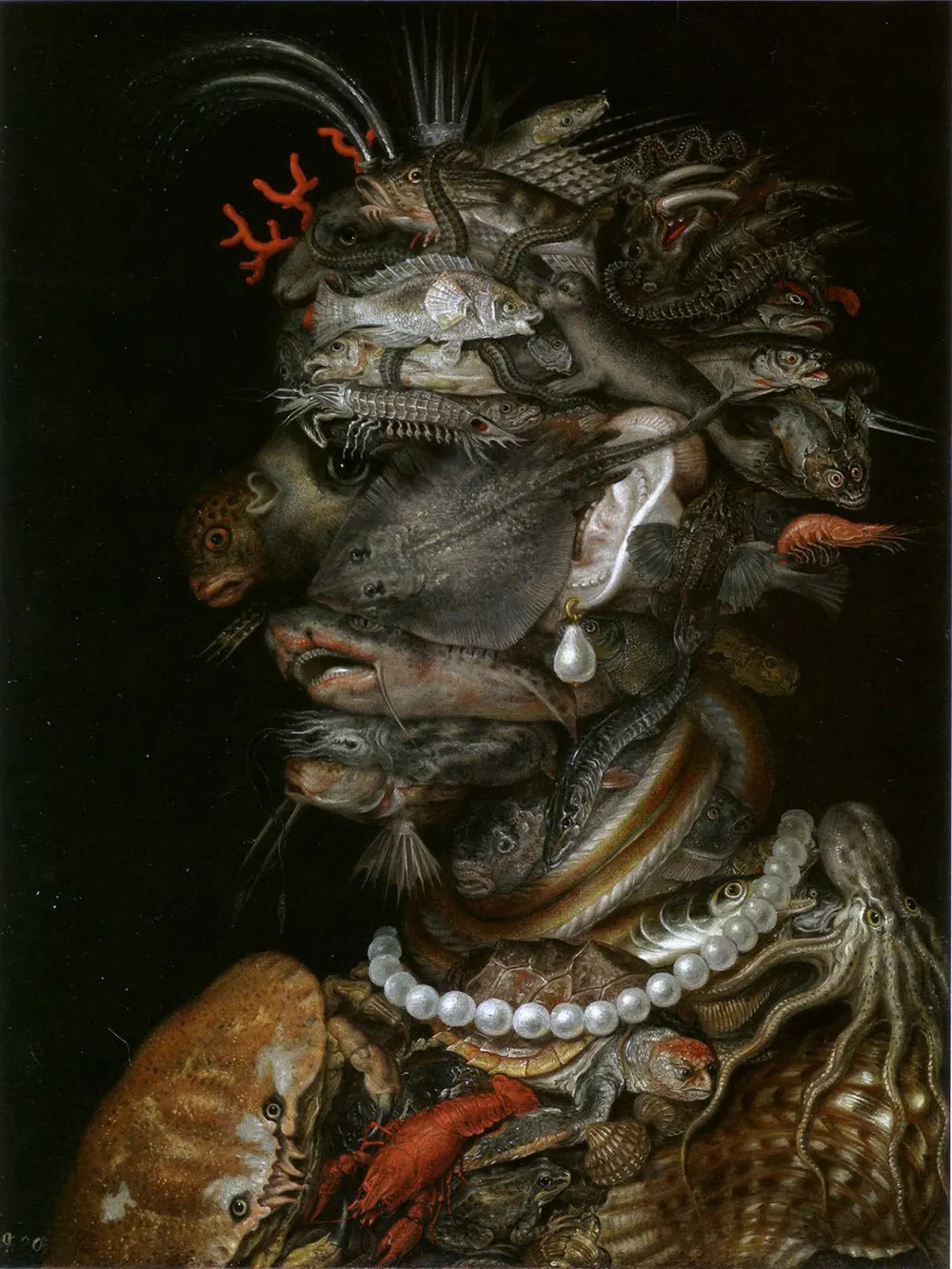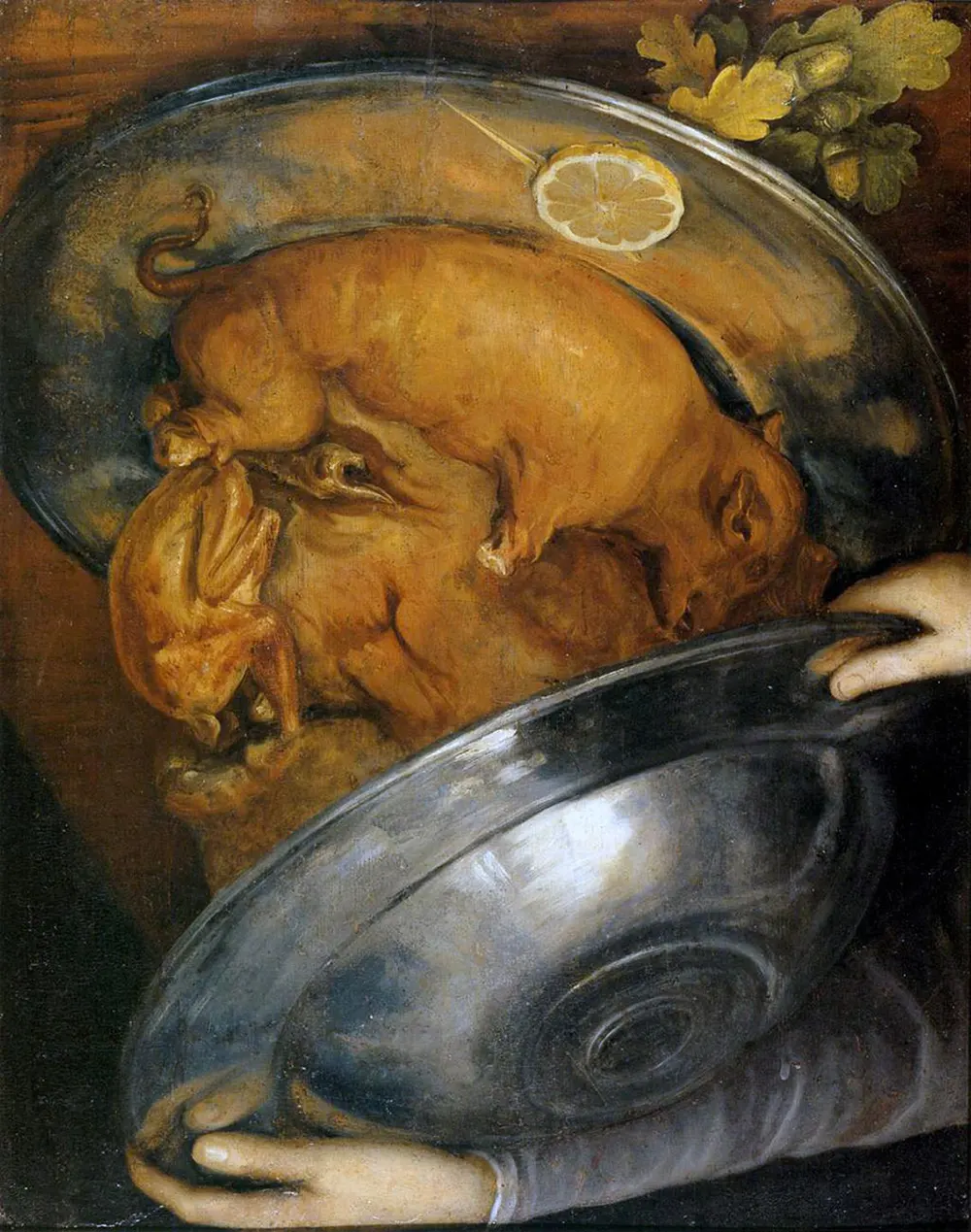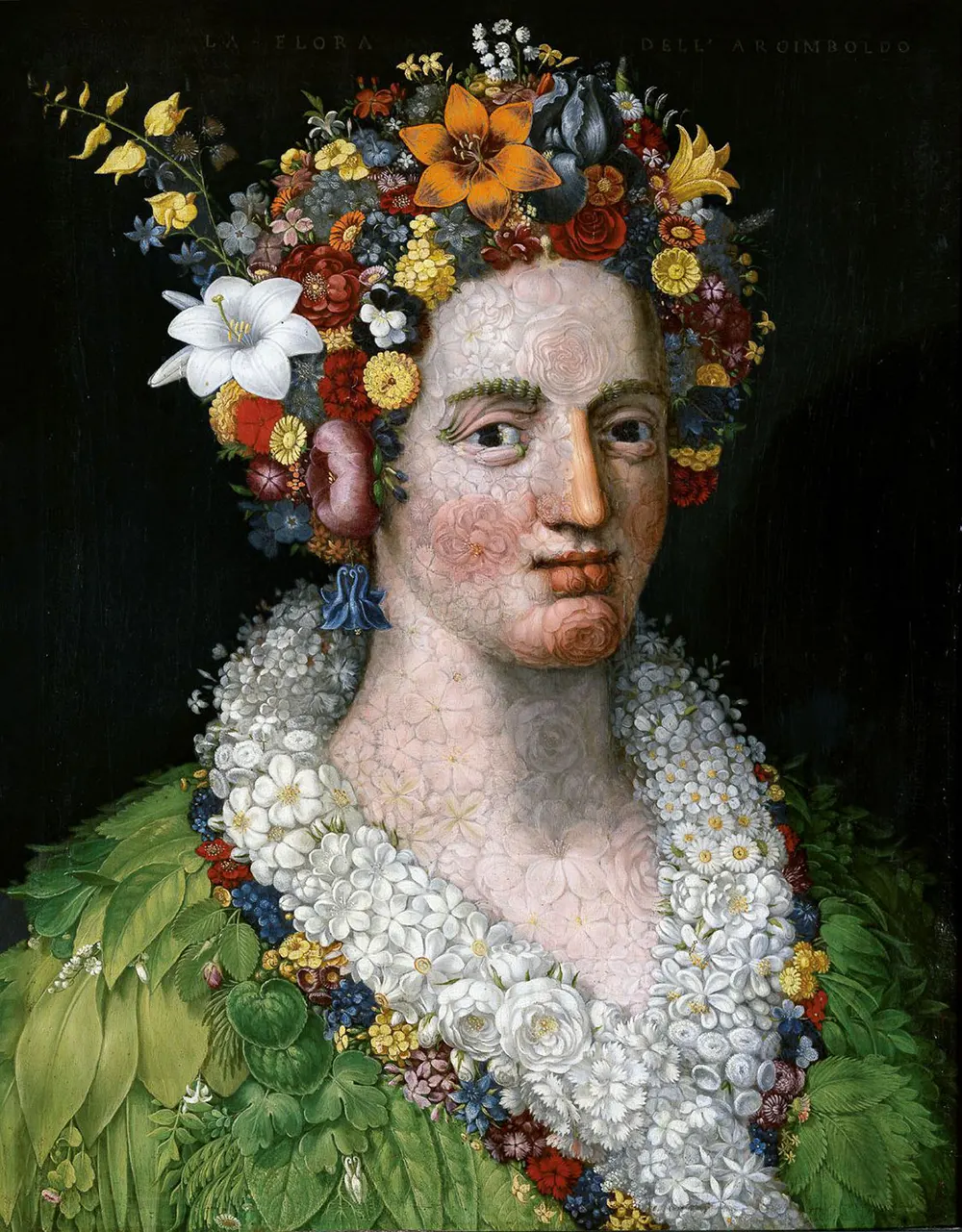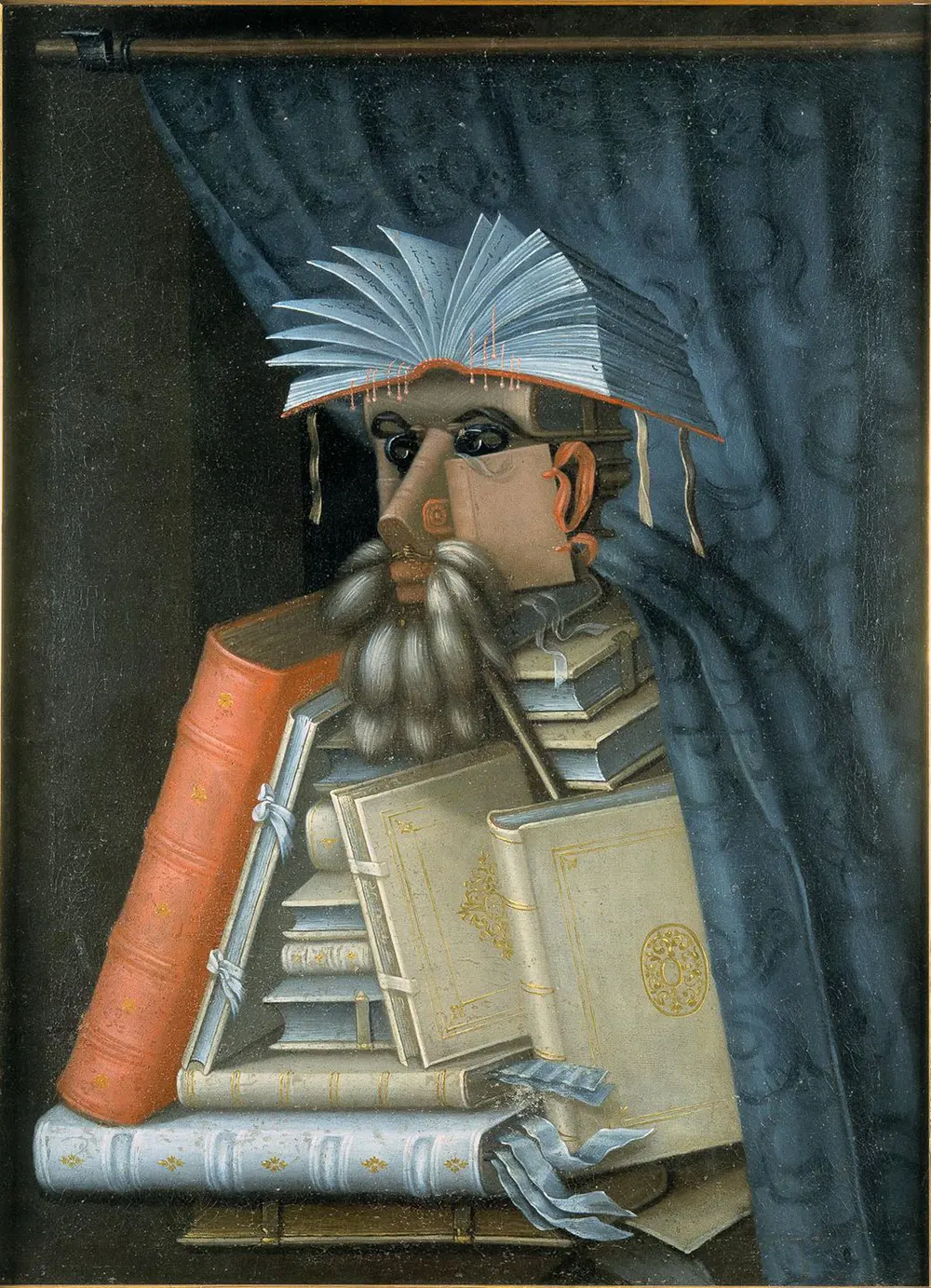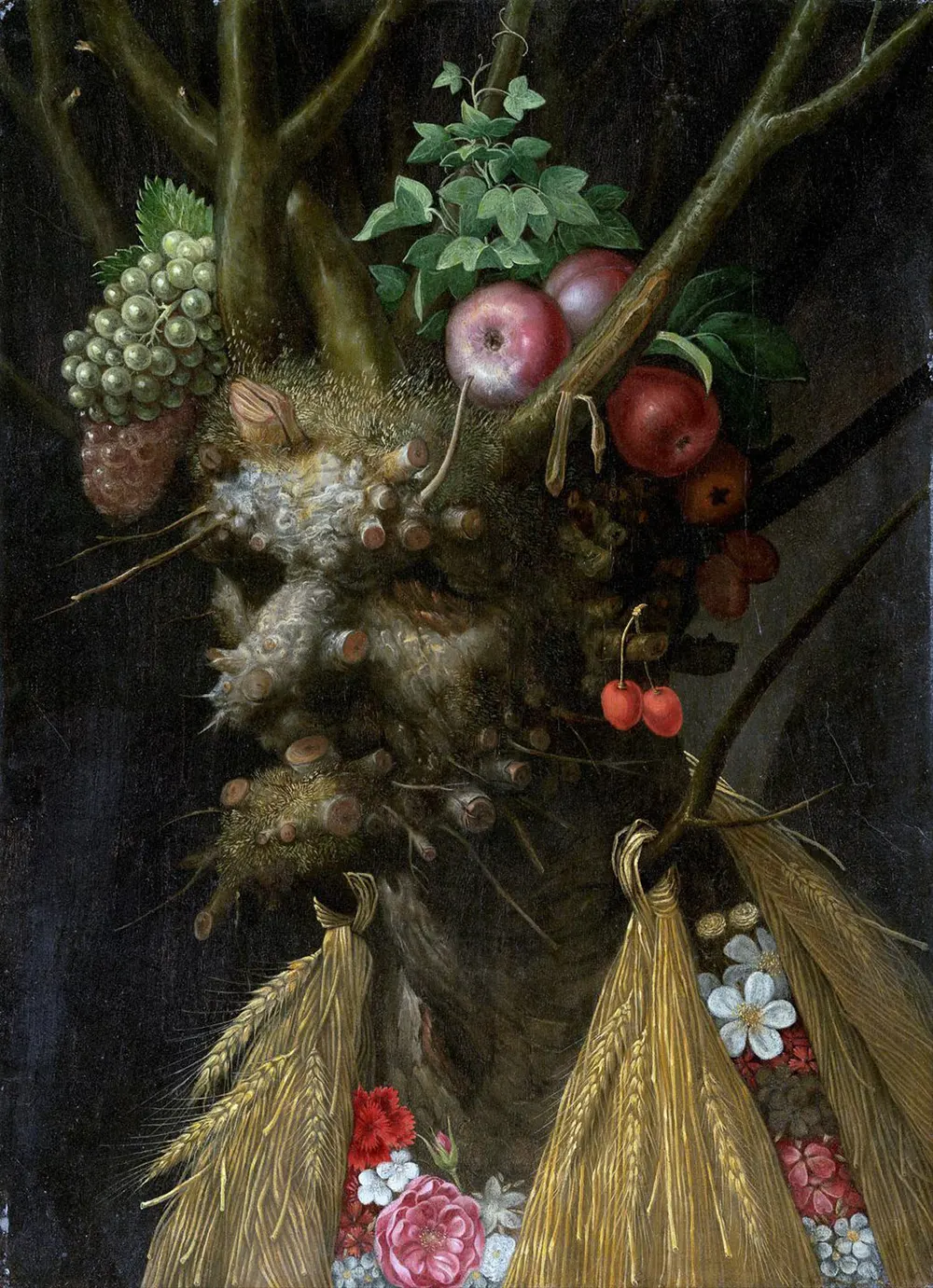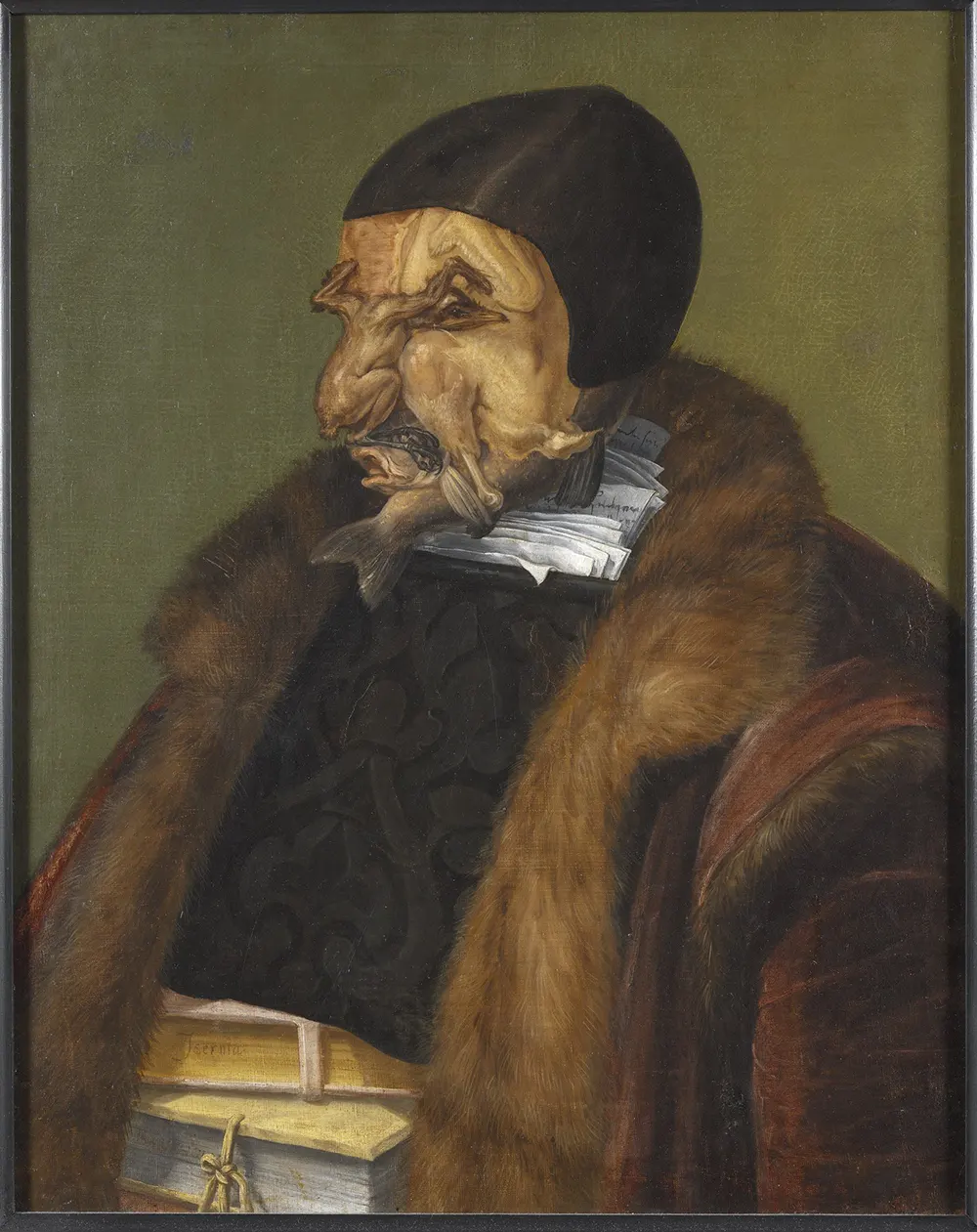These are some of the startling details in the composite paintings by Giuseppe Arcimboldo (1526-1593) that are made up of disparate but related elements. Giuseppe Arcimboldo was an Italian painter best known for creating imaginative portrait heads made entirely of such objects as fruits, vegetables, flowers, fish, and books – that is, he painted representations of these objects on the canvas arranged in such a way that the whole collection of objects formed a recognizable likeness of the portrait subject. These works form a distinct category from his other productions. He was a conventional court painter of portraits for three Holy Roman Emperors in Vienna and Prague, also producing religious subjects and, among other things, a series of coloured drawings of exotic animals in the imperial menagerie. Arcimboldo’s conventional work, on traditional religious subjects, has fallen into oblivion, but his portraits of human heads made up of vegetables, plants, fruits, sea creatures, and tree roots, were greatly admired by his contemporaries and remain a source of fascination today. At a distance, his portraits looked like normal human portraits. However, individual objects in each portrait were actually overlapped together to make various anatomical shapes of a human. They were carefully constructed by his imagination. The assembled objects in each portrait were not random: each was related by characterization. In the portrait now represented by several copies called The Librarian, Arcimboldo used objects that signified the book culture at that time, such as the curtain that created individual study rooms in a library. The animal tails, which became the beard of the portrait, were used as dusters. By using everyday objects, the portraits were decoration and still-life paintings at the same time. His works showed not only nature and human beings, but also how closely they were related. After a portrait was released to the public, some scholars, who had a close relationship with the book culture at that time, argued that the portrait ridiculed their scholarship. In fact, Arcimboldo criticized rich people’s misbehavior and showed others what happened at that time through his art. In The Librarian, although the painting might have appeared ridiculous, it also contained a criticism of wealthy people who collected books only to own them, rather than to read them. Art critics debate whether his paintings were whimsical or the product of a deranged mind. A majority of scholars hold to the view, however, that given the Renaissance fascination with riddles, puzzles, and the bizarre (see, for example, the grotesque heads of Leonardo da Vinci), Arcimboldo, far from being mentally imbalanced, catered to the taste of his times. The works of Arcimboldo, especially his multiple images and visual puns, were rediscovered in the early 20th century by Surrealist artists such as Salvador Dalí. The exhibition entitled “The Arcimboldo Effect: Transformations of the face from the 16th to the 20th Century” at the Palazzo Grassi in Venice (1987) includes numerous ‘double meaning’ paintings. Arcimboldo’s influence can also be seen in the work of Shigeo Fukuda, István Orosz, Octavio Ocampo, Vic Muniz, and Sandro del Prete, as well as the films of Jan Švankmajer. Arcimboldo’s works are used by some psychologists and neuroscientists to determine the presence of lesions in the hemispheres of the brain that recognize global and local images and objects. (Photo credit: Wikimedia Commons). Notify me of new posts by email.
Δ Subscribe







